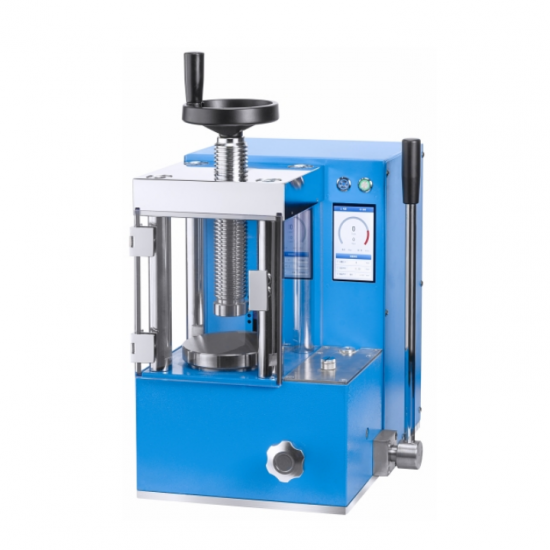Xiamen Tmax Battery Equipments Limited was set up as a manufacturer in 1995, dealing with Laboratory equipments, technology, etc. We have total manufacturing facilities of around 2, 000 square meters and more than 100 staff. Owning a group of experie-nced engineers and staffs, we can bring you not only reliable products and technology, but also excellent services and real value you will expect and enjoy.
A hydraulic hot press is a specialized piece of equipment designed to apply both heat and pressure for processes such as molding, lamination, curing, and composite material fabrication. This type of press is particularly useful in industries that require precise temperature control alongside high-pressure application, including aerospace, automotive, electronics, and manufacturing of advanced composites and polymers.
Key Features of a Hydraulic Hot Press
1. Temperature Control
Heated Platens: The press features heated platens made from materials with excellent thermal conductivity to ensure uniform heating across the entire surface area.
Precision Temperature Regulation: Advanced temperature controllers allow for accurate setting and maintenance of temperatures, typically ranging from 30°C up to 450°C or higher depending on the model and application needs.
Thermal Insulation: High-quality insulation minimizes heat loss and ensures energy efficiency while protecting the machine's components.
2. Hydraulic System
High Force Capacity: Capable of generating substantial force, often ranging from several tons to hundreds of tons, to ensure proper compaction and bonding of materials under pressure.
Precision Pressure Control: Offers fine control over the applied pressure, enabling consistent and repeatable results essential for quality production.
3. Programmable Control Systems
PLC (Programmable Logic Controller) or HMI (Human-Machine Interface): Modern presses are equipped with user-friendly interfaces that allow operators to program specific parameters like temperature, pressure, dwell time, and cooling rates.
Recipe Management: Stores multiple recipes for different materials and processes, allowing quick changeovers between jobs without manual reconfiguration.
4. Safety Features
Emergency Stop Buttons: Provides immediate shutdown capabilities to enhance operator safety.
Pressure Relief Valves: Protects against overloading by releasing excess pressure, ensuring both operator safety and equipment longevity.
Interlocks and Guarding: Ensures safe operation by preventing access to hazardous areas during the pressing cycle.
Lab Hydraulic Press
5. Versatility
Customizable Tooling: Compatible with various dies, molds, and fixtures, making it adaptable to a wide range of applications and production requirements.
Multi-Stage Processes: Some models support multi-stage operations, such as preheating, pressing, and controlled cooling, all within a single cycle.
6. Data Acquisition and Analysis
Real-Time Monitoring: Sensors provide real-time data on critical parameters like temperature, pressure, and cycle time, allowing for adjustments if necessary.
Quality Assurance: Data logging capabilities enable detailed tracking of each operation, supporting quality control efforts and compliance with industry standards.
Applications
Composite Manufacturing: Used in the fabrication of composite materials through processes like resin transfer molding (RTM), vacuum bagging, and autoclave curing.
Lamination: Ideal for creating layered products such as circuit boards, decorative laminates, and solar panel components.
Polymer Processing: Suitable for compression molding of thermoplastics and thermosetting plastics, including the production of intricate parts and components.
Metalworking: In some cases, can be used for hot forming metals to achieve desired shapes and properties.
Research and Development: Provides a controlled environment for developing new materials and testing their properties under specific conditions of temperature and pressure.
Choosing the Right Hydraulic Hot Press
When selecting a hydraulic hot press, consider factors such as the required temperature and pressure ranges, the types of materials you will be working with, the precision needed for your experiments or production processes, available space in your facility, and any specific features relevant to your intended use (e.g., heated platens, programmable controls). Investing in a hydraulic hot press tailored to your needs can greatly enhance operational efficiency, product quality, and overall competitiveness in your market.


